This is for newbies who want to get acclimated to their new device. The following tips are very useful to help you get started. They will guide you to using your tablet well.
1: Your tablet can be used as a USB mass storage device.
When you connect the tablet to a PC through a USB, the device’s file system is directly accessed. You can, therefore, copy all the files to the respective folders they belong to. Some folders are dedicated to things like podcasts and ringtones
2: You will need a Google account
A Google account is used to set up your device for the first time. If you don’t have one there will be a provision to create but if you already have a Gmail account, you will only be required to sign in.
3: You have to get past the lock screen
After the initial setup configuration, when you turn on the tablet it will bring you a lock screen with a lock icon. To navigate to this screen, (normally they do not have passwords at this point) tap the lock icon this will prompt another screen to appear, it is a circle which is inside a larger one. The outer bigger circle contains the lock icon that is displayed within it. To unlock your device, just drag the smaller circle to the outer edge of the larger circle.
4: You can use USB flash drives
These tablets support the use of the USB flash drive. If some media files are stored in the flash, they are automatically recognized by apps in the tablet.
5: The OS supports several media types
The Android operating system, unlike some other tablets with different operating systems, supports many standard media types. This means that if you have non-DRM protected media files you can play them with your tablet without any trouble at all. It supports file types like WAV, MIDI and MP3. Video files like H. 264 and MPEG-4.
6: You may need to check app compatibility
Before installing any app, you need to confirm that it is compatible with your device. When you get ready to download an app, make sure that your operating system is supported. If the app is not compatible you will be alerted by the particular store you have chosen to download from.
You also need to check screen resolution compatibility. Since many apps are designed for small cell phones, sometimes they do not fit well to the tablet. When you visit an app store some apps indicate upfront whether the app is compatible with your tablet or not. If they have not been stated, you may need to search the internet for reviews on that particular app.
7: Screen orientation may need adjustment.
In most cases the screen orientation is intuitive. The screen rotates as you rotate the device. Some apps, however, do not support screen rotation and so don’t be troubled if it can’t rotate. Sometimes though, the rotation can be a nuisance since it rotates with the slightest provocation. You can go to settings and disable autorotation.
8: The desktop has more features.
You can either flick the display to the right or the left to access more desktop features. These extras are known as home screen panels. There are also three icons in the lower left corner. The icon located on the left acts as the back button while the middle takes you to the home screen. The one on the right give the options of the settings for a particular selected app.
9: You can delete an icon on the desktop by dragging it to the trashcan.
Android lets you customize your desktop as much as you want, remove or add some desktop icons, move an icon around or delete the icon by long touching it until a – sign appears touch it and the icon will disappear.
For more information on smartphone tablet repairs and accessories, contact the experts at Zagg Phone Repair.
